Making the Most of Brainstorming: Strategies for Productive Idea Generation
Understanding the Brainstorming Process
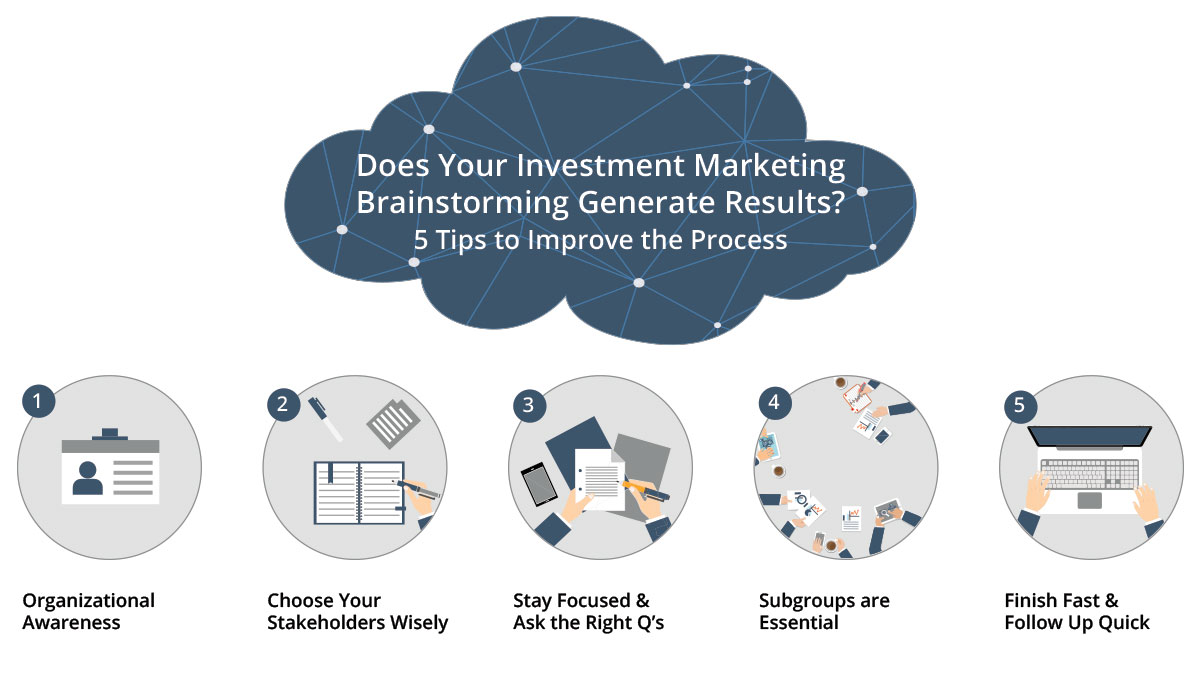
Brainstorming is a creative process that involves generating a large number of ideas within a set timeframe. It is a valuable tool for idea generation, problem-solving, and fostering innovation.
During brainstorming sessions, participants are encouraged to share their ideas without fear of judgment or criticism. The goal is to generate as many ideas as possible, regardless of their feasibility or practicality. The focus is on quantity rather than quality at this stage.
Common misconceptions about brainstorming often lead to its ineffective use. Some believe that brainstorming is a free-for-all with no structure or rules, while others believe that it is a time-consuming process. However, when done correctly, brainstorming can be a highly productive and efficient process.
To make the most out of brainstorming, it is important to set clear goals and objectives beforehand. This ensures that the session remains focused and on track. Additionally, selecting the right team members is crucial for a successful brainstorming session. Diverse perspectives and expertise can lead to more creative and innovative ideas.
By creating a conducive environment and establishing ground rules, the stage is set for effective brainstorming. Techniques such as mind mapping and visualization, as well as role-playing and scenario planning, can further enhance idea generation.
Once ideas have been generated, it is important to evaluate and refine them. Using pre-determined criteria, the generated ideas can be assessed for their feasibility and potential. Finally, selected ideas can be further developed and refined through a structured process.
In conclusion, effective brainstorming strategies can lead to numerous benefits for an organization, including increased creativity, innovation, and problem-solving capabilities. Implementing successful idea generation techniques can greatly contribute to the success and growth of an organization.
Understanding Brainstorming and its importance

Brainstorming is a creative process that plays a vital role in idea generation and problem-solving. It fosters innovation by encouraging participants to freely share their ideas and thoughts, without the fear of judgment or criticism. This open and collaborative environment allows for the exploration of a wide range of possibilities.
The importance of brainstorming lies in its ability to generate a large quantity of ideas. This quantity-based approach allows for a diverse pool of ideas, increasing the chances of finding innovative solutions and creative breakthroughs. Additionally, brainstorming encourages team members to think outside the box and consider unconventional ideas that might otherwise be overlooked.
Furthermore, brainstorming promotes collaboration and team building. It encourages participation from all team members, regardless of their role or hierarchy, fostering a sense of inclusivity and engagement. This collaborative process brings together diverse perspectives, expertise, and experiences, leading to a more comprehensive and well-rounded set of ideas.
Overall, understanding the value of brainstorming and its importance in idea generation is crucial for organizations seeking to enhance their creativity and innovation capabilities. By incorporating effective brainstorming strategies, organizations can unlock the full potential of their teams and drive meaningful growth and success.
Common misconceptions about Brainstorming
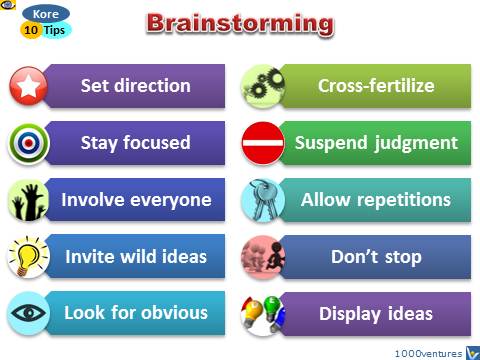
Common misconceptions about brainstorming can hinder its effectiveness and limit the potential of idea generation. One common misconception is that brainstorming is a free-for-all session where anything goes. However, effective brainstorming requires structure and guidelines to ensure a focused and productive session. Another misconception is that brainstorming is a one-time event that leads to immediate solutions. In reality, brainstorming is an iterative process that may require multiple sessions to generate and refine ideas.
Some people also believe that brainstorming is only effective with a large group of participants. While having diverse perspectives can be valuable, brainstorming can be effective with smaller groups as well. Additionally, it is often thought that brainstorming should only be done in person, but virtual brainstorming sessions can be just as effective and allow for participation from remote team members.
Lastly, there is a misconception that brainstorming is only effective for generating new ideas. While brainstorming is a great tool for ideation, it can also be used to solve problems, improve existing processes, and generate creative solutions.
Addressing these misconceptions and understanding the true nature of brainstorming can help teams make the most of this valuable process and enhance their ability to generate innovative ideas.
Pre-Breinstorming Preparations

Pre-Breinstorming preparations are crucial for ensuring a successful brainstorming session and maximizing the potential for productive idea generation. The first step in this process is setting clear goals and objectives for the session. By clearly defining what the team hopes to achieve, participants can stay focused and work towards a common purpose.
Another important aspect of pre-brainstorming preparations is selecting the right team members. It is essential to have a diverse group of individuals who bring different perspectives, experiences, and expertise to the table. This diversity can lead to more innovative ideas and a well-rounded discussion.
In addition to goal-setting and team selection, creating a conducive environment for brainstorming is essential. This involves finding a comfortable and relaxed setting that encourages creativity and open communication. Providing the necessary tools and resources, such as whiteboards, pens, and sticky notes, can also enhance the brainstorming experience.
Lastly, establishing ground rules for the session is crucial. Setting guidelines for active listening, respecting others' ideas, and encouraging participation can help create a safe and inclusive space for brainstorming. These rules ensure that everyone has an equal opportunity to contribute and that ideas are evaluated based on merit rather than individuals' personal biases.
By investing time and effort into pre-brainstorming preparations, teams can lay the foundation for a productive and successful idea generation session.
Setting clear goals and objectives
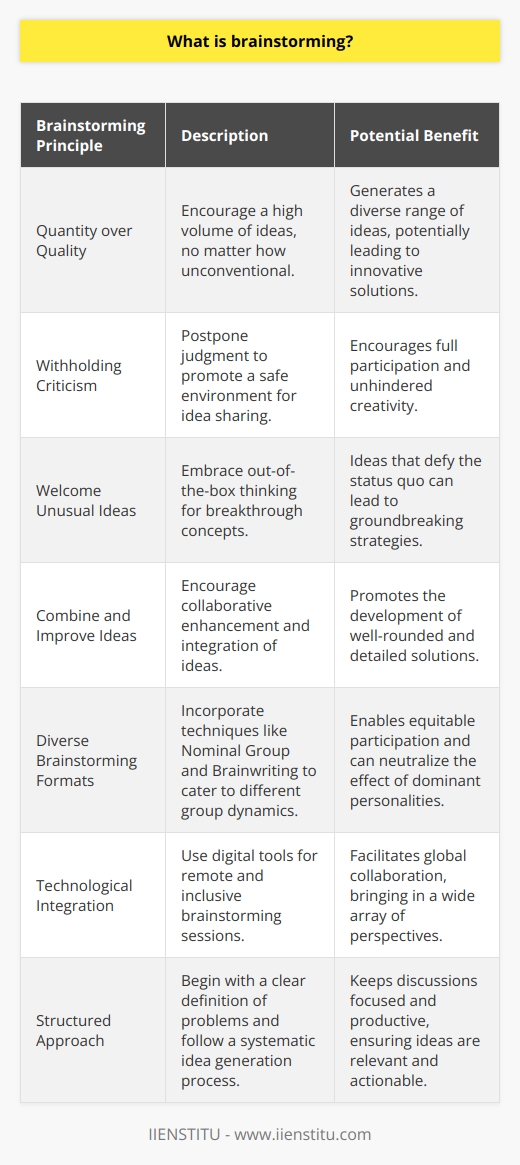
Setting clear goals and objectives is a crucial step in the pre-brainstorming process. It provides a sense of direction and purpose for the brainstorming session, guiding participants towards productive idea generation. By clearly defining what the team hopes to achieve, it helps keep the focus on relevant topics and avoids wasting time on irrelevant discussions.
When setting goals and objectives, it is important to be specific, measurable, achievable, relevant, and time-bound (SMART). This means clearly specifying the desired outcome, ensuring that it can be measured to track progress, ensuring it is realistic and attainable, making sure it aligns with the overall purpose of the session, and setting a time frame for completion.
Clear goals and objectives also help in setting the tone and expectations for the brainstorming session. They provide a framework for participants to brainstorm within and help in prioritizing ideas based on their alignment with the set goals and objectives.
In summary, setting clear goals and objectives for the brainstorming session is essential for providing a sense of direction, ensuring focus, and maximizing the potential for productive idea generation.
Selecting the right team members

When it comes to brainstorming, selecting the right team members is crucial for maximizing the effectiveness of the session. A diverse group of individuals with different backgrounds, experiences, and perspectives can bring a wider range of ideas and insights to the table.
In order to select the right team members, it is important to consider their expertise and knowledge in the subject matter being brainstormed. Look for individuals who have a deep understanding of the problem or challenge at hand, as well as those who have a creative mindset and are open to new ideas.
Additionally, it is important to consider the dynamics within the team. Look for individuals who can work well together and are comfortable sharing their thoughts and opinions. A team that provides a safe and inclusive environment can foster a more productive brainstorming session.
It can also be beneficial to include individuals from different departments or areas of the organization, as they can bring unique perspectives and insights. This can help to break down silos and encourage cross-functional collaboration.
Overall, selecting the right team members for a brainstorming session is essential for generating a diverse range of ideas and maximizing the potential for innovative solutions.
Setting the Stage for Brainstorming

Creating a conducive environment and establishing ground rules are essential for setting the stage for a successful brainstorming session. The environment plays a crucial role in encouraging creativity and collaboration. It should be comfortable, free from distractions, and provide the necessary tools and resources for idea generation, such as whiteboards, markers, and sticky notes.
When it comes to establishing ground rules, it is important to encourage open and respectful communication. Everyone should feel comfortable sharing their ideas, and criticism should be constructive. Ground rules can include concepts such as "no idea is a bad idea," "no interrupting," and "listening to understand, not to respond."
To further enhance the brainstorming session, facilitators can introduce techniques such as mind mapping and visualization. These techniques encourage participants to visually organize their thoughts and connections, helping to generate new ideas and inspire creativity.
Additionally, role-playing and scenario planning can be effective techniques for idea generation. By mentally placing themselves in different situations or perspectives, team members can generate new insights and uncover innovative solutions.
By creating a conducive environment and establishing ground rules, organizations can set the stage for productive brainstorming sessions. These techniques promote open communication, collaboration, and creativity, leading to the generation of impactful ideas.
Creating a conducive environment
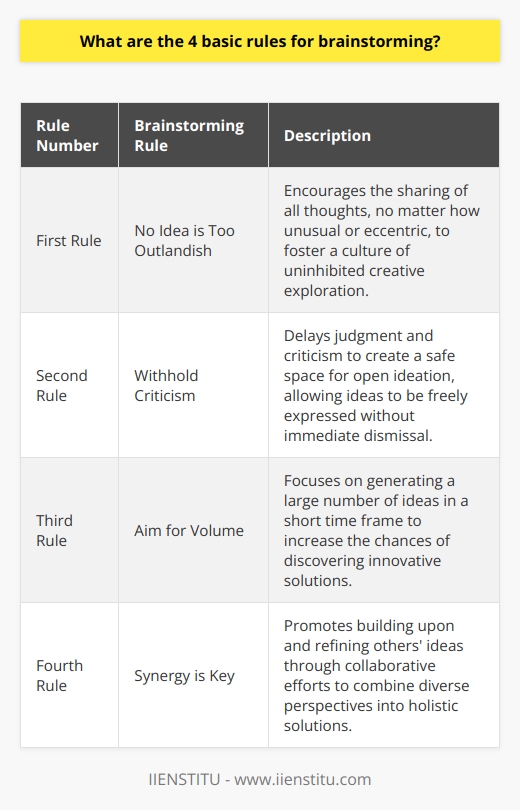
Creating a conducive environment is crucial for a successful brainstorming session. The environment should be comfortable, inspiring, and free from distractions. By providing a space that is inviting and allows for open communication, participants are more likely to feel comfortable sharing their ideas without fear of judgment or criticism.
To create an ideal brainstorming environment, organizations should consider the physical space and the resources available. Comfortable seating, natural lighting, and a clutter-free area can help promote creativity and focus. Providing the necessary tools and resources, such as whiteboards, markers, and sticky notes, enables participants to visually express their ideas and collaborate effectively.
In addition to the physical environment, setting the right mood is equally important. Facilitators can introduce calming background music or use visual cues, like inspirational quotes or images, to stimulate creativity. Ensuring that there are no interruptions or distractions, such as phone calls or emails, allows participants to fully immerse themselves in the brainstorming process.
Ultimately, creating a conducive environment sets the stage for productive idea generation. It encourages collaboration, enhances creativity, and fosters an atmosphere of openness and respect. By investing time and effort into creating the right environment, organizations can maximize the potential of their brainstorming sessions.
Establishing ground rules for the session

Establishing ground rules for the brainstorming session is crucial to maintain focus and ensure productive idea generation. These rules create a framework for participants to follow, setting expectations for behavior and creating a respectful and inclusive environment.
One important ground rule is encouraging active participation. All team members should be given equal opportunities to contribute their ideas and thoughts without interruption or judgment. This promotes a collaborative atmosphere where everyone feels valued and engaged.
Another rule is to foster open-mindedness. Participants should be encouraged to suspend judgment and refrain from criticizing or dismissing ideas during the brainstorming process. This allows for a free flow of ideas and promotes creativity.
Confidentiality is also an essential ground rule. Participants should feel safe to share their ideas without the fear of them being shared outside the session. This creates a trusting environment where individuals can freely express themselves.
Lastly, time management is crucial. Establishing time limits for each idea generation phase ensures that the session remains focused and productive. It prevents discussions from derailing and helps in generating a sufficient number of ideas within the available time.
By establishing these ground rules, the brainstorming session becomes structured, respectful, and efficient. It creates an atmosphere conducive to idea generation and maximizes the potential for creative solutions to emerge.
Techniques for Productive Idea Generation

To facilitate productive idea generation during brainstorming, it is essential to employ various techniques. One such technique is mind mapping, which involves visually organizing thoughts and ideas to identify connections and generate new possibilities. This technique encourages participants to explore different branches and relationships, allowing for a more comprehensive and innovative approach to problem-solving.
Visualization techniques can also be valuable in idea generation. By creating vivid mental images and scenarios related to the problem at hand, participants can stimulate creativity and uncover new perspectives. This technique encourages individuals to think outside the box and envision potential solutions or outcomes.
Role-playing and scenario planning can be utilized to generate ideas by encouraging participants to embody different roles or perspectives. This technique promotes empathy and fosters a deeper understanding of the problem, leading to more innovative and well-rounded solutions.
To maximize the effectiveness of these techniques, it is crucial to provide participants with the necessary tools, such as markers, sticky notes, or digital platforms, to physically or digitally capture and organize their ideas. This helps maintain focus and ensures that no valuable ideas are lost during the brainstorming session.
By incorporating these techniques into the brainstorming process, organizations can cultivate a creative and collaborative environment that facilitates productive idea generation and leads to innovative solutions.
Mind mapping and visualization techniques

One effective technique for productive idea generation during brainstorming is mind mapping. This technique involves visually organizing thoughts and ideas to identify connections and generate new possibilities. By creating a visual representation of concepts and their relationships, individuals can explore different branches and uncover innovative solutions. Mind mapping helps participants think more comprehensively and encourages a free-flowing approach to problem-solving.
Another technique that can enhance idea generation is visualization. This involves creating vivid mental images and scenarios related to the problem at hand. By visualizing potential solutions or outcomes, participants can stimulate their creativity and uncover new perspectives. Visualization allows individuals to think outside the box and imagine alternative approaches that they may not have otherwise considered.
Both mind mapping and visualization techniques promote divergent thinking, enabling participants to explore a range of ideas and possibilities. They can be used independently or in combination to encourage a more holistic and creative approach during brainstorming sessions. By incorporating these techniques, organizations can tap into the collective creativity of their team members and generate innovative solutions to complex problems.
Role-playing and scenario planning
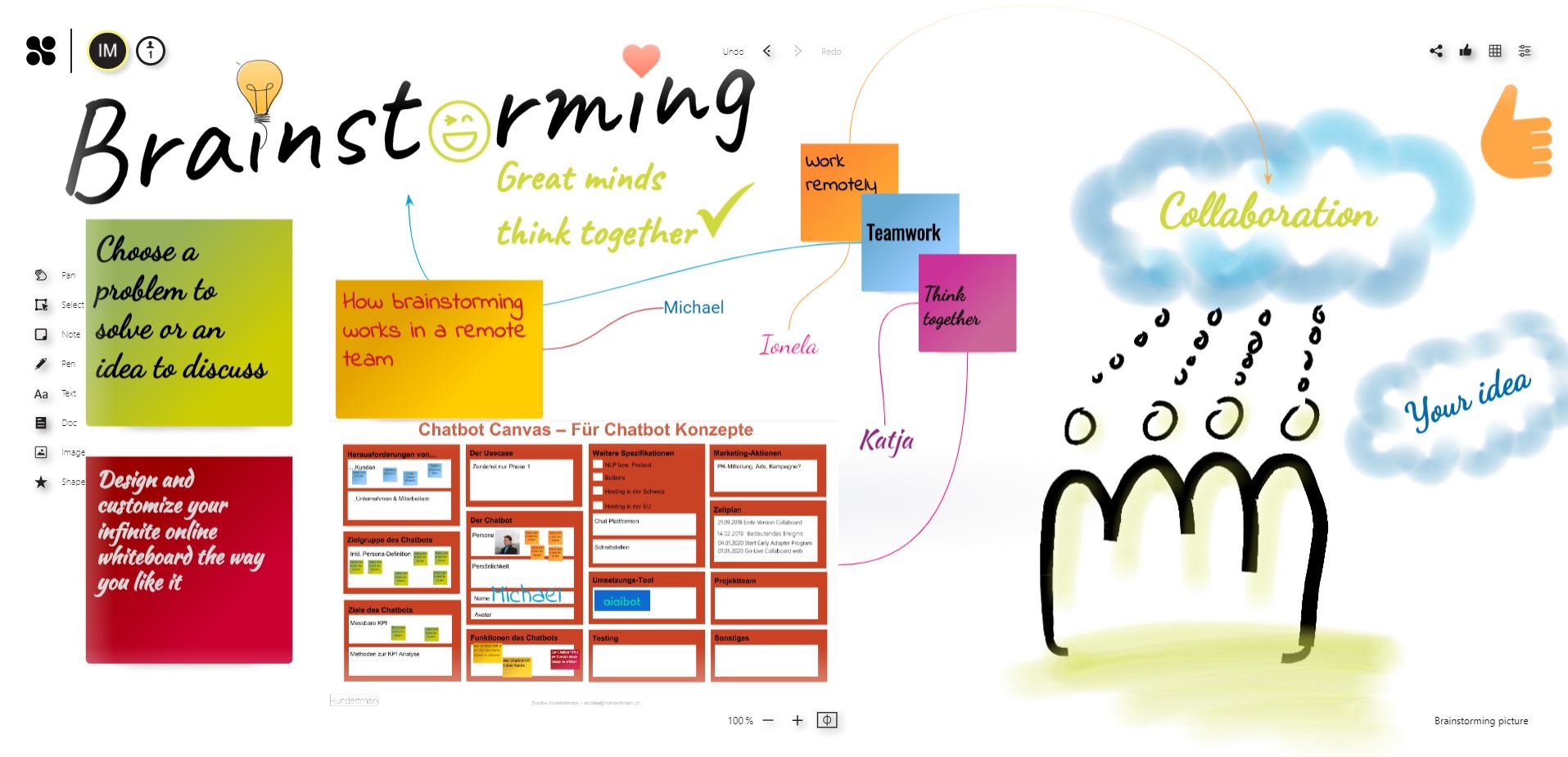
Role-playing and scenario planning can be effective techniques for productive idea generation during brainstorming sessions. Role-playing involves assigning different team members specific roles and having them act out various scenarios related to the problem at hand. This technique allows participants to step into different perspectives and gain a deeper understanding of the problem from multiple angles. By immersing themselves in the roles, individuals can generate new ideas and insights that they may not have considered otherwise.
Scenario planning involves envisioning future scenarios or situations that may arise as a result of implementing certain ideas. This technique helps participants anticipate potential challenges and opportunities that may arise and develop strategies to address them proactively. By creating detailed scenarios and considering various outcomes, individuals can generate innovative ideas and solutions.
Both role-playing and scenario planning encourage participants to think creatively and explore different possibilities. These techniques promote collaborative problem-solving and can lead to the development of unique and practical ideas. By incorporating these techniques into brainstorming sessions, organizations can unlock the full potential of their team members and generate innovative solutions to complex problems.
Evaluating and Refining Ideas
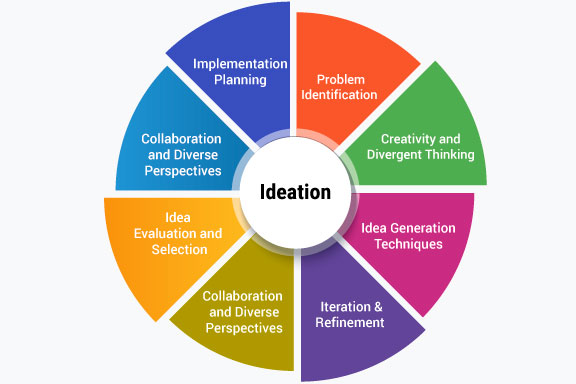
To make the most of the brainstorming session, it is crucial to evaluate and refine the generated ideas. This process ensures that only the most promising and feasible ideas are considered for further development.
When evaluating ideas, it is important to establish clear criteria for assessment. These criteria may include factors such as feasibility, alignment with goals, potential impact, and resource requirements. By using these criteria, the team can objectively assess each idea and prioritize those with the highest potential.
Once the evaluation is complete, the selected ideas can be refined and developed further. This involves fleshing out the details, considering potential challenges and risks, and creating an action plan for implementation. Collaboration among team members is essential during this stage to gather different perspectives and ensure that all aspects of the idea are thoroughly examined.
It is also important to involve stakeholders in the evaluation and refinement process. By seeking input from key individuals and departments, the idea can be refined to better align with organizational needs and goals. This collaboration helps to ensure that the final idea is comprehensive, well-rounded, and has the potential to succeed.
By effectively evaluating and refining ideas, organizations can ensure that the best ideas rise to the surface and are transformed into actionable plans. This process increases the likelihood of successful implementation and drives innovation within the organization.
Criteria for evaluating brainstormed ideas
.jpg?width=850&height=408&name=ai%20steps%20(1).jpg)
When evaluating brainstormed ideas, it is crucial to establish clear criteria for assessment. These criteria serve as guidelines to objectively evaluate and prioritize the ideas based on their feasibility, alignment with goals, potential impact, and resource requirements.
Feasibility: One important criterion to consider is whether the idea is practical and can be implemented within the available resources and time frame. This involves assessing the technical feasibility, budget constraints, and any legal or regulatory considerations.
Alignment with goals: Another criterion is the extent to which the idea aligns with the organization's goals and objectives. The idea should contribute to solving a problem, improving processes, or achieving specific outcomes that align with the organization's mission.
Potential impact: The potential impact of the idea should also be evaluated. This includes considering the expected benefits, such as increased efficiency, cost savings, improved customer satisfaction, or enhanced productivity.
Resource requirements: It is essential to assess the resources required to implement the idea successfully. This includes considering the financial, human, and technological resources needed to execute the idea and sustain its implementation.
By using these criteria, organizations can evaluate brainstormed ideas objectively and select the most promising ones for further development. This ensures that only the ideas with the highest potential for success are pursued, increasing the likelihood of successful implementation and driving innovation within the organization.
Steps to refine and develop selected ideas

Once a set of ideas has been brainstormed and evaluated, the next step is to refine and develop the selected ideas further. This ensures that the chosen concepts are turned into actionable plans that can be implemented effectively. Here are the key steps to refining and developing selected ideas:
- Define specific objectives: Clearly articulate the objectives and desired outcomes of each selected idea. This helps to focus and direct the refinement process towards achieving specific goals.
- Conduct research and gather additional information: Gather relevant data, market research, and other information to support and validate the selected ideas. This helps in understanding the feasibility and potential impact of the ideas.
- Identify and address challenges: Analyze the potential challenges and obstacles that may arise during implementation. Develop strategies and contingency plans to mitigate these risks and ensure successful execution.
- Collaborate and gather feedback: Engage relevant stakeholders and team members in the refinement process. Seek their input and feedback to enhance and optimize the ideas. This collaborative approach helps to generate diverse perspectives and insights, leading to stronger solutions.
- Create an action plan: Develop a detailed action plan that outlines the steps, timeline, and resources required to implement the refined idea. This plan should address all aspects, including budgeting, resource allocation, and potential milestones.
- Test and iterate: Before fully implementing the refined idea, consider conducting pilot tests or small-scale experiments to gather feedback and identify any areas for further improvement. This iterative approach allows for continuous refinement and enhancement of the idea.
By following these steps, organizations can ensure that the selected ideas are refined and developed into well-defined plans that have a higher chance of success when implemented.
Conclusion

In conclusion, effective brainstorming is a vital process for generating innovative ideas and driving organizational growth. By understanding the importance of brainstorming and dispelling common misconceptions, organizations can harness the full potential of their teams and achieve breakthrough results.
Before starting a brainstorming session, it is crucial to set clear goals and objectives and select the right team members who bring diverse perspectives and expertise. Creating a conducive environment and establishing ground rules further enhance the brainstorming process, encouraging open and collaborative idea generation.
Various techniques, such as mind mapping, visualization, role-playing, and scenario planning, can be employed to encourage productive idea generation and foster creativity within the team.
Once ideas have been generated, evaluating them against predefined criteria helps in selecting the most promising ones for further development. The selected ideas can then be refined by defining specific objectives, conducting research, addressing challenges, gathering feedback, creating an action plan, and testing and iterating.
By implementing these strategies, organizations can ensure that their brainstormed ideas are transformed into actionable plans with a higher likelihood of success. Ultimately, effective brainstorming processes lead to increased innovation, improved problem-solving, and organizational success.
Benefits of effective brainstorming strategies
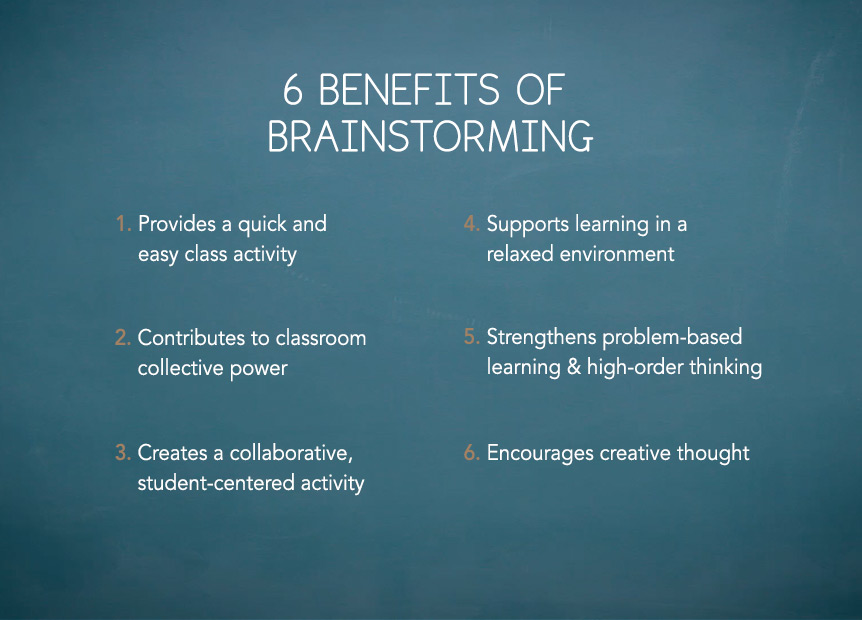
Effective brainstorming strategies provide numerous benefits for organizations. Firstly, they enable the generation of innovative and creative ideas. By bringing together diverse team members with different perspectives and expertise, brainstorming allows for a broader range of ideas to be explored. This can lead to breakthrough solutions and new opportunities for growth and improvement.
Secondly, effective brainstorming promotes collaboration and teamwork. It encourages open communication and mutual respect among team members, fostering a positive and inclusive environment. This, in turn, leads to increased engagement and motivation, as individuals feel valued and empowered to contribute their ideas.
Furthermore, successful brainstorming strategies help organizations solve complex problems. By leveraging the collective intelligence of the team, brainstorming allows for a thorough examination of challenges from multiple angles. This enhances problem-solving ability and increases the likelihood of finding optimal solutions.
Lastly, effective brainstorming can boost overall organizational performance. It harnesses the creativity and expertise of individuals, leading to improved decision-making, increased innovation, and enhanced productivity.
By implementing effective brainstorming strategies, organizations can unlock the full potential of their teams, driving success and competitive advantage in today's fast-paced business landscape.
Implementing successful idea generation in your organization

Implementing successful idea generation in an organization is crucial for fostering innovation and staying competitive in today's fast-paced business landscape. It requires a strategic approach and the commitment of both leadership and team members.
To implement successful idea generation, organizations can start by creating a culture that values and encourages creativity and innovation. This can be done by establishing regular brainstorming sessions, providing resources for idea exploration, and recognizing and rewarding innovative thinking.
Additionally, organizations should invest in training and development programs that enhance employees' creative thinking and problem-solving skills. This can include workshops, seminars, and online courses focused on brainstorming techniques and idea generation strategies.
Furthermore, organizations should create channels and platforms for employees to share their ideas and collaborate with one another. This can be done through idea management software or dedicated innovation platforms that allow for easy sharing, feedback, and collaboration.
Lastly, organizations should establish clear processes for evaluating, selecting, and implementing ideas that have the potential for impactful results. This can involve creating cross-functional teams, conducting feasibility studies, and setting milestones for idea execution.
By implementing these strategies, organizations can create a culture of innovation, drive continuous improvement, and ultimately achieve sustainable growth and success.
